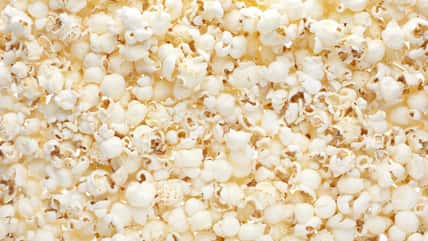Ancient Vomit Was Found By An Amateur Fossil Hunter In Denmark

Around 66 million years ago, a marine creature from the Cretaceous era munched on some sea lilies and developed an upset stomach, which caused them to make a reappearance. Now, the remains of this meal have been found in the form of fossilized vomit.
The discovery was made by an amateur fossil hunter in Denmark named Peter Bennicke. He came across some odd-looking fragments on the Danish Island of Zealand at Stevns Klint, a coastal cliff and UNESCO World Heritage Site.
He brought the fragments to Geomuseum Faxe, a natural history museum in the town of Faxe, where they were cleaned and examined.
Experts identified them as pieces of sea lily, formally known as crinoids. Sea lilies are aquatic animals related to sea stars and sea urchins.
In the fossil, the sea lilies were embedded in chalk. It is considered to be prehistoric vomit, which is scientifically called regurgitalite.
The sea lily does not appear to have made it to the marine creature’s stomach because the edges of the fossil are very clear and sharp. The find tells scientists more about the food chain in the Cretaceous period.
During the Late Cretaceous, dinosaurs like Tyrannosaurus and Velociraptor wandered the land shortly before the Chicxulub asteroid almost wiped them out.
According to Jesper Milàn, a paleontologist and curator at Geomuseum Faxe, the animal that ate the sea lilies was likely a bottom-dwelling shark with crushing teeth, not sharp ones.
The sea lilies mostly consisted of skeleton, so the creature ate what it could and threw up the rest.

Sign up for Chip Chick’s newsletter and get stories like this delivered to your inbox.
“Lilies are not a particularly nutritious food, as they are mainly made up of calcium plates held together by very few soft tissues,” Milàn said.
“But here we have an animal, most likely some kind of fish, that 66 million years ago ate lilies that lived on the seabed of the Cretaceous Sea and then vomited up the skeletal parts.”
Sharks survived the impact of the Chicxulub asteroid. Today, the closest living relative of the shark that ate the sea lilies would be the Port Jackson shark in Australia.
The fossilized vomit is now referred to as “Danekræ,” a Danish term for objects discovered in Denmark that have significant historical value.
To date, more than 1,000 artifacts have been designated as Danekræ. Anyone who finds them is required by law to give them to a natural history museum in the country.
It is not the first time that ancient regurgitated remains have been studied. For example, in 2018, researchers discovered fossilized vomit while conducting excavations in southeastern Utah. There were remnants of frogs and salamanders in the vomit.
The oldest piece of puke is from a 160-million-year-old ichthyosaur unearthed in England in 2002. As for the newfound sea lily pieces, they will be put on display at Geomuseum Faxe.
More About:News





